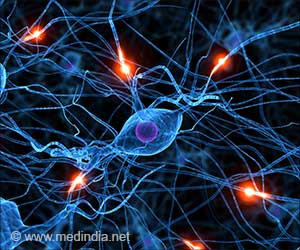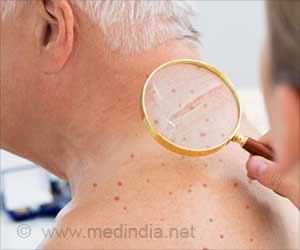Researchers have gained insight into how developing cells typically switch to a restricted, or particular state and how that process might go wrong in cancer.

‘A fluctuating pattern of cells has been discovered using fruit fly genetics that throws light on how humans work and how things go wrong in cancer and other diseases.
’





A multidisciplinary team co-led by biologist Richard W. Carthew and engineer Luís A.N. Amaral studied normal cell behavior in the developing eye. The researchers were surprised to discover that the levels of an important protein called Yan start fluctuating wildly when the cell is switching from a more primitive, stem-like state to a more specialized state. If the levels don't or can't fluctuate, the cell doesn't switch and move forward."This mad fluctuation, or noise, happens at the time of cell transition. For the first time, we see there is a brief time period as the developing cell goes from point A to point B. The noise is a state of 'in between' and is important for cells to switch to a more specialized state. This limbo might be where normal cells take a cancerous path," said Carthew, professor of molecular biosciences in Northwestern's Weinberg College of Arts and Sciences.
The researchers also found that a molecular signal received by a cell receptor called EGFR is important for turning the noise off. If that signal is not received, the cell remains in an uncontrolled state.
By pinpointing this noise and its "off" switch as important points in the normal process of cell differentiation, the Northwestern researchers provide targets for scientists studying how cells can go out of control and transform into cancer cells.
The study was published as the cover story by the online life sciences and biomedicine journal eLife.
Advertisement
The EGFR protein that turns off the noise in flies is called Her-2 in humans. Her-2 is an oncogene that plays an important role in human breast cancer.
Advertisement
Fruit fly cells are small and closely packed together, making study of them challenging. Carthew and Amaral's team of biologists, chemical and biological engineers, computer scientists and chemists together figured out how to identify and analyze thousands and thousands of individual cells in the flies' eyes.
"In the past, people have built models of regulatory networks that control cell differentiation mostly by genetically perturbing one or two components of the network at a time and then compiling those results into models," said Amaral, professor of chemical and biological engineering at the McCormick School of Engineering. "We instead measured the retina as it developed and found the unexpected behavior of the key regulatory factors Yan and EGFR."
Nicolás Peláez, first author of the study and a Ph.D. candidate in interdisciplinary biological sciences working with Amaral and Carthew, built new tools to study this strange feature of noise in developing flies. His methods enabled the researchers to easily measure both the concentration of the Yan protein and its fluctuation (noise).
It takes 15 to 20 hours for a fruit fly cell to go from being an unrestricted cell to a restricted cell, Carthew said. Peláez determined the Yan protein is noisy, or fluctuating, for six to eight of those hours.
"Studying the dynamics of molecules regulating fly-eye patterning can inform us about human disease. Using model organisms such as fruit flies will help us understand quantitatively the basic biological principles governing differentiation in complex animals," Peláez said.
Source-Eurekalert















